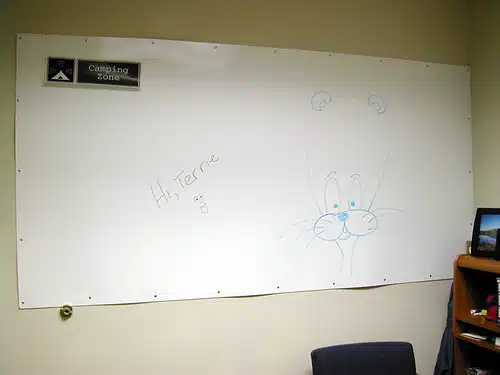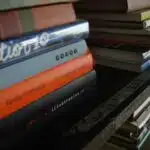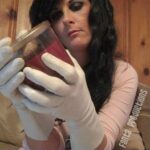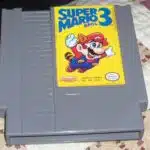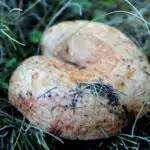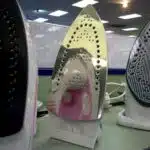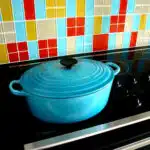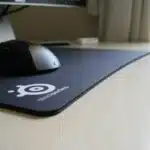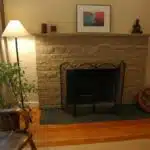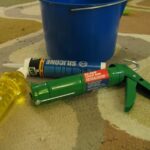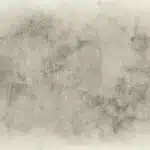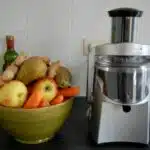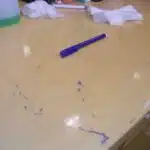Whiteboards are a common tool in educational, business, and personal settings. They are used to communicate ideas, take notes, and brainstorm with others. However, over time they can become stained, discolored, and difficult to read. Cleaning a whiteboard is an essential part of maintaining its usefulness and prolonging its life. As a whiteboard cleaning expert, I have compiled the most effective methods for cleaning whiteboards so that they remain bright and clear for years to come.
Cleaning a whiteboard requires more than just wiping it down with a dry eraser or cloth. There are specific techniques that must be followed in order to remove stubborn stains and prevent future damage. This article will provide step-by-step instructions on how to clean a whiteboard using various cleaning agents such as water, alcohol, vinegar, or specialized cleaners. Additionally, we will discuss best practices for preventing damage to your board including proper storage techniques and regular maintenance routines. By following these tips and tricks you’ll be able to keep your whiteboard looking brand new for all of your future presentations and meetings.
Understanding The Importance Of Whiteboard Maintenance
Did you know that a typical whiteboard can last for up to ten years if it is properly maintained and cleaned regularly? This might come as a surprise to some, but the longevity and durability of your whiteboard are directly proportional to how well you take care of it. Neglecting your whiteboard can lead to permanent stains, ghosting, and even render it unusable over time. In fact, studies have shown that regular whiteboard maintenance not only increases its lifespan but also enhances its performance.
The importance of maintaining your whiteboard cannot be overstated. The surface of the board is made of a porous material which can accumulate dust, dirt, and other debris easily. If left uncleaned for an extended period, these particles build up and form stubborn stains that are almost impossible to remove. These stains not only make writing on the board difficult but also leave permanent marks that affect its overall appearance. Regular cleaning ensures that the board remains in pristine condition, making it easier to write on and more visually appealing.
In addition to improving the longevity and durability of your whiteboard, regular maintenance has other benefits as well. It helps prevent ghosting or shadowing from previous markings left on the board, which can be distracting during presentations or lectures. It also ensures that ink does not seep into the pores of the board’s surface, which can cause discoloration over time. By taking good care of your whiteboard through regular cleaning and maintenance, you will not only increase its lifespan but also enhance its performance for years to come.
As a whiteboard cleaning expert, I cannot emphasize enough how important it is to maintain your whiteboard regularly. By doing so, you will ensure that it performs at its best while ensuring its longevity and durability. In the next section, we’ll discuss gathering the necessary supplies for cleaning your whiteboard effectively without damaging its surface.
Gathering The Necessary Supplies
Organizing supplies is an essential step in cleaning a whiteboard. Before getting started, gather all the necessary items to avoid interruptions during the process. The supplies needed for cleaning a whiteboard are easily accessible and cost-effective.
To begin with, you will need a dry microfiber cloth, which is ideal for removing dust and debris from the board’s surface. Microfiber cloths are preferable because they do not leave behind fibers or residue that can damage the board. Additionally, you will require a cleaner. Many commercial cleaners are available in stores, but you can make an effective cleaner at home using vinegar and water. It is also advisable to have gloves on hand to protect your hands while using cleaning agents.
Cost-effective options for organizing supplies include using old t-shirts or towels as cleaning cloths instead of purchasing new ones. You may also use homemade cleaners instead of purchasing commercial products. These alternatives are environmentally friendly and budget-friendly.
In summary, organizing supplies is crucial when it comes to cleaning whiteboards effectively. The necessary items include a dry microfiber cloth, a cleaner (commercial or homemade), and gloves for protection. Cost-effective options such as using old t-shirts or towels as cleaning cloths and making homemade cleaners can help save money while maintaining an eco-friendly approach to cleaning. With these supplies ready, the next step is preparing the whiteboard for cleaning by removing any permanent marker stains or residue before proceeding with the actual cleaning process.
Preparing The Whiteboard For Cleaning
Before you begin cleaning your whiteboard, it is essential to prepare the area. As a professional cleaner, I always start with a pre-cleaning inspection to identify any stubborn marks or stains that might be challenging to remove later on. This step helps me determine the best cleaning solution to use and saves me time and effort in the long run.
Once you have identified any tough stains, the next step is to protect the surrounding area. Whiteboards are often found in classrooms or offices where other items like desks or computers might be nearby. To avoid damaging these items with cleaning solutions or water, I recommend using a sheet of plastic or newspaper to cover them before starting. This way, if any solution drips or splashes, it will not affect anything else in the room.
To give you an idea of what this would look like, here’s an example table:
| Item | Protection |
|---|---|
| Desk | Plastic Sheet |
| Computer | Newspaper |
| Chair | Moved out of the way |
By following these two simple steps – pre-cleaning inspection and protecting surrounding areas – you can ensure that your whiteboard cleaning process goes smoothly and without incident. In the next section, we’ll discuss how to use water effectively when cleaning your whiteboard.
Using Water To Clean The Whiteboard
When it comes to cleaning a whiteboard, water is the most common and readily available cleaning agent. The process of using water is simple and straightforward. Begin by wiping down the whiteboard with a dry cloth to remove any excess debris or dust. Then, dampen a clean cloth with water and gently wipe down the board in a circular motion.
There are several benefits of drying the whiteboard after using water as well. Drying prevents any remaining moisture from causing damage or warping to the board. It also ensures that any leftover residue or streaks are removed, leaving behind a perfectly clean surface. To dry the whiteboard, use a fresh and dry cloth to gently wipe away any excess moisture until the board is completely dry.
If you prefer not to use water, there are alternatives to consider as well. For example, some people have found success in using vinegar or rubbing alcohol as an alternative cleaning solution. However, it’s important to note that these agents can be harsher on the whiteboard surface and should be used sparingly.
As we move forward into exploring other methods for cleaning your whiteboard, it’s important to understand that there are alternatives available if you prefer not to use water. While water is generally considered safe for most surfaces and easy to find around your home or office, there may be situations where you want to try something different or more effective for your specific needs. In the next section, we will look at how alcohol can be used as an alternative method for cleaning a whiteboard effectively.
Using Alcohol To Clean The Whiteboard
Alcohol is an effective cleaner for removing residue from whiteboards. It is a powerful solvent that can dissolve even the most stubborn ink marks and stains. To use alcohol to clean your whiteboard, you will need a microfiber cloth and a bottle of rubbing alcohol.
First, spray some alcohol onto the microfiber cloth. Be sure not to spray it directly onto the whiteboard, as this could cause damage or streaking. Then, gently wipe the board in circular motions until all residue has been lifted off. Make sure to avoid pressing too hard on the board, as this could cause permanent scratches or other damage.
To avoid streaks when cleaning with alcohol, make sure to use a clean section of the cloth for each pass across the board. This will prevent any residual ink or dirt from being spread around and leaving streaks behind. By following these simple steps, you can effectively clean your whiteboard using alcohol without causing any damage or leaving behind any unsightly streaks.
Moving forward into our next section, we will explore how vinegar can be used as an alternative cleaning solution for your whiteboard. Vinegar is a natural disinfectant that is both eco-friendly and cost-effective. With its acidic properties, vinegar can cut through even tough stains on your whiteboard without causing any harm to its surface.
Using Vinegar To Clean The Whiteboard
After using alcohol to clean your whiteboard, another effective cleaning solution is vinegar. Many people are surprised to learn that vinegar can be used as a cleaning agent, but it is actually a versatile and eco-friendly option. Vinegar is an acid that helps break down dirt and grime on your whiteboard without leaving any residue or streaks.
One of the benefits of vinegar is that it is a natural disinfectant. This means that it kills bacteria and viruses on contact, making it an ideal choice for classrooms and offices where many people share the same whiteboard. Additionally, vinegar is inexpensive and easy to find at most grocery stores. It can be diluted with water to create a cleaning solution or used at full strength for tougher stains.
If you prefer not to use alcohol or vinegar on your whiteboard, there are other alternative cleaning solutions available. Some people recommend using dish soap mixed with warm water, while others suggest using a solution of baking soda and water. However, be cautious when trying out new solutions as some may damage the surface of your whiteboard.
Next section: If you’re looking for a more specialized cleaning solution for your whiteboard, there are many products available on the market specifically designed for this purpose. These cleaners often contain chemicals that are more powerful than those found in household items like vinegar or dish soap. However, be sure to read the instructions carefully before using any product to ensure that it is safe for your specific type of whiteboard surface.
Using Specialized Whiteboard Cleaners
A whiteboard is like a blank canvas that holds the potential to inspire ideas, encourage creativity, and facilitate learning. To ensure that it remains in pristine condition, one must use the proper cleaning materials. While some people opt for traditional cleaning solutions such as alcohol or vinegar, these products may cause damage to the surface of the board over time. Fortunately, there are alternative whiteboard cleaners available that are specifically designed for this purpose.
Whiteboard cleaner alternatives come in different forms such as sprays, wipes, or even foams. These products are specially formulated to dissolve ink stains and remove ghosting without causing harm to the board’s surface. Eco-friendly cleaning options are also available for those who prefer environmentally conscious choices. These cleaners contain natural ingredients that effectively clean the board while minimizing any negative impact on the environment.
When using specialized whiteboard cleaners, it is essential to follow the manufacturer’s instructions carefully. Apply a small amount of cleaner onto a soft cloth and wipe the surface gently. Avoid using abrasive materials or scrubbing too hard as this can cause scratches on the board’s surface. After cleaning, wipe off any excess solution with a dry cloth to prevent streaking.
As a whiteboard cleaning expert, I highly recommend using specialized whiteboard cleaners for optimal results. Not only do they effectively remove stains and ghosting but they also help prolong your board’s lifespan by preventing damage caused by harsh chemicals. In the next section, we will discuss tips for removing stubborn stains that may require additional attention beyond regular cleaning methods.
Tips For Removing Stubborn Stains
Removing stubborn stains from a whiteboard can be a daunting task. However, with the right tools and techniques, it is possible to restore your whiteboard’s pristine condition. While DIY solutions can work for some light stains, it is essential to know when it is time to enlist professional cleaning services.
One effective DIY solution for removing stubborn stains from a whiteboard involves using vinegar and water. To do this, mix equal parts of vinegar and water in a spray bottle and apply the solution on the stained area. Leave the solution on for several minutes before wiping it off with a clean cloth. Another DIY method involves using rubbing alcohol or hand sanitizer to remove ink marks. Apply either substance onto a clean cloth and gently rub the stain until it disappears.
For more severe stains that cannot be removed through simple DIY methods, it may be time to call in professional cleaning services. Professional cleaners use specialized equipment and chemicals that are designed to remove even the most stubborn stains without damaging your whiteboard’s surface. Additionally, they have the expertise needed to safely handle any chemicals used during the cleaning process.
To prevent future stains on your whiteboard, there are several best practices you can follow. Firstly, always use high-quality dry erase markers that are easy to wipe off without leaving residue behind. Additionally, avoid using permanent markers or other writing tools not intended for use on whiteboards. Finally, always ensure that you clean your whiteboard regularly after every use to prevent any build-up of dirt or grime that can lead to stubborn stains in the future.
Best Practices For Preventing Future Stains
Preventive measures are the key to maintaining whiteboards in pristine condition. One of the most effective methods to prevent stains is by using stain-resistant coatings. These coatings form a barrier that inhibits ink from penetrating the surface, making it easier to clean off residue with a simple eraser or cleaning solution.
Another preventive measure is to limit the use of permanent markers on whiteboards. Permanent markers contain solvents that seep into the surface, causing irreparable damage and leaving unsightly marks. It’s best to use only dry erase markers, which are designed specifically for whiteboards and can be easily wiped away without leaving any residue.
Regular cleaning is also essential in preventing future stains. Clean your whiteboard at least once a week, depending on usage frequency. Use a soft cloth or sponge and mild cleaning solution, then wipe it dry with a clean towel or cloth. Avoid using abrasive cleaners or chemicals as they may cause damage to the surface, leading to more staining problems.
Incorporating these preventive measures will help keep your whiteboard in excellent condition for an extended period. Stain-resistant coatings and limiting permanent marker usage are effective ways of avoiding future stains, while regular cleaning ensures that any residue is removed before it has a chance to set in. By following these simple preventive measures, you can enjoy a clean and functional whiteboard for many years to come.
Transition: While taking preventive measures is critical in keeping your whiteboard clean, avoiding common mistakes when cleaning it can also make a significant difference in maintaining its longevity.
Avoiding Common Mistakes When Cleaning Whiteboards
After learning about the best practices for preventing future stains on your whiteboard, it is now time to delve into the crucial aspect of cleaning your whiteboard. Cleaning your whiteboard is an important part of maintaining its longevity and ensuring that it continues to function efficiently. However, cleaning a whiteboard can be tricky, and if done improperly, it can lead to permanent damage.
Preventing smudging is a major concern when cleaning your whiteboard. To avoid this, you should always use a clean cloth that is specifically designed for cleaning whiteboards. Choosing the right cleaning cloth is paramount in ensuring that your whiteboard remains smudge-free after cleaning. Avoid using abrasive materials such as paper towels or rough cloths as they can leave scratches on the surface of your board.
Choosing the right cleaning agent is also essential in maintaining a clean and well-functioning whiteboard. Using a mixture of water and vinegar has been proven to be an effective solution in removing stubborn marks without damaging the board’s surface. After cleaning your board, ensure that you dry it thoroughly with another clean cloth before use. In the next section, we will explore avoiding common mistakes when cleaning your whiteboard and learn proper storage techniques to prolong its life.
Proper Storage Techniques To Prolong Your Whiteboard’s Life
Proper storage techniques are essential in prolonging the life of your whiteboard. One of the key ways to prevent damage is to store your whiteboard vertically rather than horizontally. This ensures that the weight of the board is evenly distributed, reducing the risk of warping and bending.
Another important aspect of proper storage is keeping your whiteboard away from extreme temperatures and moisture. Exposure to humidity can cause the board’s surface to become discolored or develop mold, while exposure to heat can cause it to warp or crack. Therefore, it is recommended that you store your whiteboard in a dry and cool location.
Lastly, it’s crucial to avoid stacking items on top of your whiteboard when storing it. Doing so may cause pressure points on its surface, which can lead to scratches and dents over time. Instead, keep the area around your whiteboard clear from any objects that could potentially damage it.
By following these proper storage techniques for whiteboards, you’ll be able to prolong its lifespan and save yourself money in the long run. In addition, regular maintenance routines for your whiteboard will further help prevent any potential damage.
Regular Maintenance Routines For Your Whiteboard
Keeping your whiteboard in top condition requires a regular maintenance routine. Think of it as tending to a garden – without proper care, weeds can take over and ruin the beauty of the space. Similarly, neglecting to clean your whiteboard can lead to permanent staining and ghosting. Regular maintenance routines for your whiteboard are essential to extend its lifespan and ensure optimal functionality.
Cleaning frequency is an important aspect of regular maintenance for your whiteboard. Depending on usage, cleaning should be done daily or weekly, with thorough cleaning done once a month. Neglecting to clean regularly will result in difficult-to-remove stains that may require more aggressive cleaning methods later on. Establishing a routine will also prevent the accumulation of dry erase marker residue that can lead to ghosting.
DIY cleaning solutions are an easy and cost-effective way to keep your whiteboard clean. A simple solution of water and vinegar or rubbing alcohol works wonders in removing stubborn stains and preventing ghosting. For those who prefer commercial products, there are many options available on the market designed specifically for whiteboards. Always follow manufacturer instructions when using any cleaning solution on your board.
Moving onto the next step in maintaining a pristine workspace, cleaning whiteboard accessories is crucial in keeping them functional and efficient.
Cleaning Whiteboard Accessories
- Whiteboard markers require regular cleaning to maximize their effectiveness and extend their lifespan.
- To clean whiteboard markers, one should use a paper towel or soft cloth and a gentle detergent solution.
- For whiteboard erasers, it is important to periodically clean the fabric surface with a damp cloth to remove any dust or dirt.
- Additionally, erasers should be washed periodically with a mild detergent and then air-dried to ensure optimal performance.
Cleaning Whiteboard Markers
To effectively clean whiteboard markers, it is important to use the appropriate cleaning methods. Traditional dry erase board cleaners or whiteboard cleaning solutions are often used, but alternative cleaning methods can be just as effective. One eco-friendly option is to use rubbing alcohol. Simply apply a small amount onto a soft cloth and gently wipe away the marker residue. Another method involves using vinegar and water solution, which can be sprayed onto the board and wiped away with a dry cloth.
When considering how to clean whiteboard markers, it is important to note that not all markers are created equal. Some may contain more stubborn ink that requires stronger cleaning methods. In these cases, using a Magic Eraser or a fine-grit sandpaper can provide an effective solution. However, caution must be taken when using these abrasive materials as they can damage the surface of the board if used improperly.
Overall, keeping your whiteboard accessories clean is essential for prolonging their lifespan and ensuring their continued functionality. By utilizing alternative cleaning methods and eco-friendly options, you can maintain your whiteboard while also being mindful of the environment. As a whiteboard cleaning expert, I highly recommend incorporating these strategies into your regular maintenance routine for optimal results.
Cleaning Whiteboard Erasers
As a whiteboard cleaning expert, maintaining the cleanliness of whiteboard accessories is essential to ensure their longevity and functionality. While much attention is given to cleaning whiteboard markers, it is equally important to clean the erasers. Over time, erasers can accumulate marker residue and dust which can reduce their effectiveness in wiping away markings on the board.
Fortunately, there are several effective cleaning solutions for whiteboard erasers. One option is to use traditional dry erase board cleaners or whiteboard cleaning solutions. These products are specifically designed for removing ink residue from erasers and restoring their functionality. Another alternative involves using homemade cleaning solutions such as vinegar and water or rubbing alcohol which can be applied onto a cloth and gently wiped over the surface of the eraser.
For those seeking an eco-friendly option, alternative erasers made from felted wool or microfiber materials are becoming increasingly popular. These types of erasers are not only reusable but also less likely to leave behind residue on the board compared to traditional foam or felt erasers. When it comes to maintenance, alternative erasers can be washed with soap and water or even placed in a washing machine for easy cleaning.
By incorporating these strategies into your regular maintenance routine, you can ensure that your whiteboard accessories remain clean and functional for many uses to come. Remember that proper care for your whiteboard tools will help keep them looking like new while maximizing their potential for serving others effectively.
Cleaning Large Whiteboards Or Multiple Boards
Moving on from cleaning whiteboard accessories, we will now discuss how to clean large whiteboards or multiple boards. When it comes to cleaning large whiteboards, it is important to use the right tools and techniques for efficient and thorough cleaning. One effective tool for this task is magnetic erasers, which can easily remove dry erase marker residue without leaving any marks on the board.
Aside from using magnetic erasers, another way to clean large whiteboards is by utilizing natural products. These products are not only environmentally friendly but also safe to use. For example, a mixture of vinegar and water can effectively remove stubborn stains and dirt on the board’s surface. Another option is to use a baking soda solution, which can help eliminate any unpleasant odor that may be present on the board.
To ensure that your whiteboard stays clean and in good condition, it is important to troubleshoot common cleaning issues that may arise. One of these issues is ghosting, which refers to the faint remains of previous markings left behind after erasing. To prevent this problem, make sure to use high-quality markers and avoid leaving markings on the board for extended periods of time. Additionally, if ghosting does occur, try using a whiteboard cleaner specifically designed for removing residual markings.
In summary, when it comes to cleaning large whiteboards or multiple boards, using magnetic erasers and natural products can be highly effective. It is also important to troubleshoot any common issues such as ghosting in order to maintain a clean and clear writing surface. By following these tips and techniques, you can keep your whiteboards looking pristine and ready for all your writing needs.
Troubleshooting Common Whiteboard Cleaning Issues
When it comes to cleaning a whiteboard, there are several common issues that people encounter. One of the most frustrating is dealing with ghosting marks. These marks can appear on the board after it has been cleaned and dried, leaving behind a faint residue that detracts from the overall cleanliness of the board.
To combat ghosting marks, it is important to choose the right cleaning cloth. Many people make the mistake of using a cloth that is too rough or abrasive, which can actually cause more harm than good. Instead, opt for a soft microfiber cloth that will gently remove any dirt or debris without scratching the surface of the board.
Another common issue when cleaning a whiteboard is choosing the wrong cleaning solution. While there are many commercial products available specifically for whiteboards, some people prefer to make their own cleaning solution at home using vinegar or rubbing alcohol. It is important to test any new solution on a small corner of the board first to ensure that it does not cause damage or leave behind any unwanted residue.
In order to keep your whiteboard looking its best, it is important to take care when cleaning it and address any issues promptly. By choosing the right cleaning cloth and testing any new solutions before use, you can avoid common problems like ghosting marks and keep your board looking bright and clean for years to come.
Conclusion
Whiteboards are essential tools in classrooms, offices, and other settings where information needs to be shared. Maintaining a clean whiteboard is crucial for its longevity and functionality. With the right supplies and techniques, cleaning a whiteboard can be a simple task.
Firstly, gather the necessary supplies such as a microfiber cloth, water, and alcohol. Before cleaning the board, make sure it is adequately prepared by removing excess ink and debris with an eraser or dry cloth. To clean the board thoroughly, use water or alcohol depending on the level of grime buildup.
Regular maintenance routines should also be established to prevent excessive dirt accumulation on your whiteboard. Cleaning accessories such as markers, erasers, and magnets are equally important in maintaining a clean board. For large boards or multiple boards, it is advisable to divide them into sections to ensure efficient cleaning.
In conclusion, keeping a whiteboard clean is an integral aspect of its maintenance. Regular cleaning helps enhance its lifespan while ensuring optimum functionality. By following these tips from a professional whiteboard cleaner, you can keep your whiteboard looking new for years to come.
Image Credits
- “DIY Whiteboard” by Terrie Schweitzer (featured)

